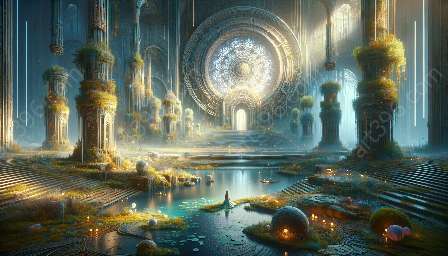Concept art is the visual representation of a concept or idea, often used in the fields of entertainment, video games, films, and more. Within concept art, character design holds a pivotal role in shaping the narrative and driving the storytelling process. This article explores the significance of character design in propelling the narrative in concept art, and its crucial role in creating captivating visual stories.
The Foundation of Character Design for Concept Art
Character design in concept art is the art of creating and visualizing a character's appearance, personality, and role within a given world or story. It involves a deep understanding of the character’s traits, background, and motivations, reflecting their essence through visual elements.
Character design serves as the foundation for building a compelling narrative. A well-designed character communicates essential information about the story, setting the tone and atmosphere while engaging the audience. The visual aspects, such as the character's attire, expression, body language, and environment, play a vital role in developing the narrative.
Visual Storytelling through Character Design
Character design is instrumental in conveying the narrative and propelling the storyline forward. Through the use of visual cues, character designs can evoke emotions, convey plot points, and establish connections between characters and their environment. The design choices, including color schemes, textures, and shapes, contribute to the overall narrative, enriching the visual storytelling experience.
Moreover, character design holds the power to captivate and immerse viewers in the story world. A well-crafted character design can elicit empathy, curiosity, or a sense of wonder, drawing the audience deeper into the narrative. By carefully crafting character designs, artists can evoke specific responses from the audience, adding depth and complexity to the storytelling process.
Character Design as a Catalyst for World-Building
Character design not only shapes individual characters but also plays a pivotal role in world-building within concept art. The visual representation of characters contributes to establishing the cultural, historical, and societal aspects of the story world. Through character design, artists can convey the intricacies of the fictional universe, expanding on its lore and enriching the narrative with depth and authenticity.
Furthermore, character designs can serve as storytelling devices, offering visual clues about the world's history, technological advancements, or cultural influences. Thoughtful character designs can effectively communicate the broader context of the narrative, creating a cohesive and immersive story world.
The Collaborative Nature of Character Design and Narrative
Character design and narrative development often intertwine, forming a collaborative relationship in concept art. As characters evolve within the narrative, their designs adapt and evolve in parallel, reflecting the changes in their arcs and motivations.
Artists and storytellers work in unison, with character designs influencing the narrative direction and vice versa. Through this symbiotic relationship, character design becomes a powerful tool for aligning the visual and textual elements of storytelling, ensuring a seamless and impactful narrative experience.
The Influence of Character Design in Concept Art
Character design significantly influences the narrative in concept art, laying the groundwork for compelling and immersive visual storytelling. By understanding the role of character design in propelling the narrative, artists can leverage its power to create captivating stories that resonate with audiences.
From establishing the foundation of storytelling to serving as a catalyst for world-building, character design shapes the narrative in concept art, elevating the overall impact and resonance of visual stories.

